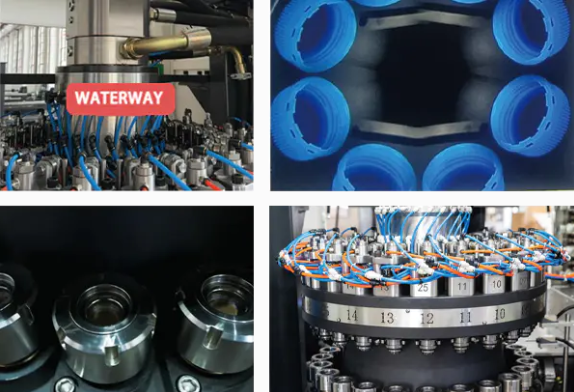chuangzhen@capping-machine.net

EN
In modern manufacturing, ensuring the safety and quality of packaged products relies heavily on the capabilities of a Capping Machine. Beyond simply securing closures, these machines play a pivotal role in maintaining hygiene, consistent sealing, and contamination control, particularly in sensitive sectors like food, beverage, and pharmaceuticals. As industry standards and consumer expectations continue to rise, capping machines are evolving to support sterile operations, precise torque application, and efficient production, all while safeguarding product integrity.

Cleanliness is one of the foremost considerations in these industries. Food and pharmaceuticals are particularly vulnerable to microbial contamination, which can compromise safety, quality, and consumer trust. Modern capping machines are designed with hygienic principles, including stainless steel frames, smooth surfaces, and minimized crevices to prevent bacterial buildup. Tool-free disassembly and clean-in-place (CIP) systems further simplify maintenance, keeping production lines aligned with FDA and GMP hygiene standards. By reducing contamination risks at the equipment level, manufacturers can create an environment that supports safe, sterile packaging.
Sealing performance is equally important, as caps serve as the line of defense against product spoilage and tampering. Advanced capping machines integrate torque control systems to ensure each closure maintains consistent tightness. This prevents under-sealing, which could to leaks or microbial intrusion, and over-sealing, which could damage caps or containers. Torque monitoring devices capture and record data for each closure, ensuring full traceability and supporting regulatory audits. This capability is especially critical in pharmaceutical packaging, where batch consistency and record-keeping are essential for compliance.
A sterile, contamination-free packaging environment also requires designs that limit human intervention. Automated spindle and chuck capping machines minimize direct operator contact with products, reducing the risk of accidental contamination. Enclosed capping areas, laminar airflow systems, and integration with cleanroom production lines further enhance sterility. These systems also comply with ISO cleanroom classification standards, ensuring that products for sensitive applications remain protected from external contaminants.
In beverage production, carbonation and liquid stability are essential, with sealing integrity serving a dual purpose: preventing contamination and maintaining freshness. Capping machines designed for carbonated beverages often feature pressure compensation to ensure secure closures without damaging container structures. For bottled water or juices, precisely torqued tamper-evident caps provide consumer assurance while meeting safety regulations.
Pharmaceutical packaging presents additional complexity. Many medications require tamper-evident and sterile capping to withstand rigorous transport and storage conditions. Machines designed for this sector often include vision inspection systems to verify cap presence, alignment, and surface integrity. Automatic detection of issues such as cross-threaded or missing caps prevents non-compliant products from reaching the market, protecting patient safety and avoiding costly recalls.
Material compatibility also influences capping performance. As the industry shifts toward lightweight, recyclable, or bio-based caps, machine design must accommodate different material properties. Advanced torque adjustment and adaptive capping heads ensure sealing integrity even with thinner or more flexible caps. By aligning with sustainability initiatives, capping machines support environmental goals while meeting packaging regulations.
Contamination control extends beyond the product to equipment operation. Dust, moisture, and chemical exposure can affect machine performance in demanding environments. Manufacturers address this by integrating sealed bearings, corrosion-resistant components, and protective housings to ensure long-term durability. Automated lubrication systems reduce downtime, while modular designs allow rapid component replacement without compromising hygiene.
Digital integration is reshaping hygiene and quality control. Real-time monitoring systems provide continuous feedback on applied torque, cap status, and machine performance. Data-driven predictive maintenance helps prevent failures that could compromise sterile production. These digital features ensure consistent hygiene, sealing, and contamination control even in high-volume operations.
Chuangzhen Capping Machines combine hygienic design, advanced sealing control, and intelligent inspection technology, providing manufacturers across industries with the tools needed to meet evolving safety and regulatory requirements. In food, beverage, and pharmaceutical packaging, this technology is critical for ensuring that every product delivered to consumers is safe, consistent, and reliable, highlighting the essential role of capping equipment in supply chain quality assurance.
Copyright © Taizhou Chuangzhen Machinery Manufacturing Co., Ltd. All Rights Reserved.
